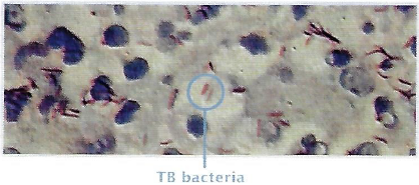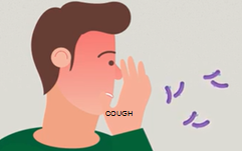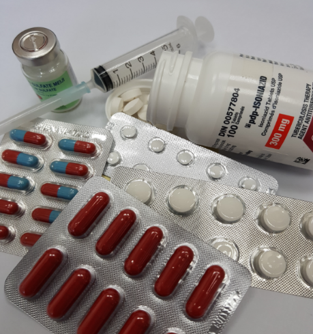What is Tuberculosis?
Tuberculosis (TB) is an infectious disease caused by the bacterium Mycobacterium tuberculosis.

Although TB bacteria usually attacks the lungs, it can affect any part of the body.
How is Tuberculosis Spread?
When a person with TB coughs or sneezes, TB bacteria are released into the air.
These bacteria can stay airborne for several hours. Those in the vicinity may become infected after breathing in these bacteria.

TB usually spreads to household members and others who live/work closely with the affected person (including friends, coworkers and schoolmates).
Who is at Risk of Tuberculosis Infection?
A person who has breathed in TB bacteria is at risk for infection.
The bacteria may initially be inactive, but can become active later and cause TB disease.
A healthy person who is infected has a 10% chance of developing TB in his/her lifetime. The risk of developing active TB is highest in the first two to five years after infection.
The risk of developing active TB increases if you:
- Have been diagnosed with conditions such as HIV infection, certain cancers or diabetes
- Are taking medication(s) which suppress the immune system
What are the Symptoms of Active Tuberculosis?
If TB has affected the lungs, symptoms include:
- A cough that does not go away
- Fever and night sweats
- Unusual and persistent fatigue
- Loss of appetite
- Unexplained weight loss
- Chest pain
- Coughing blood
Besides the lungs, TB disease can sometimes affect lymph nodes, kidneys, bones, joints, intestines and the brain. In such cases, the symptoms will depend on the part of the body that is affected.
How is Active Tuberculosis Treated?
If you have been diagnosed with TB, you would be prescribed a combination of medications for a duration of six to nine months.
You should start to feel better after a few weeks of treatment, although full recovery will take several months.
It is important that you complete the full course of treatment as prescribed, for TB to be completely cured.
If you do not complete the full course of treatment, the following may happen:
- The bacteria may multiply, causing you to become ill again
- The bacteria may develop to become drug-resistant. If this happens, you would have to take a different set of medications for a much longer duration, which usually causes more side effects. The chance of recovery would also be considerably reduced.
- You may spread the drug-resistant TB to your loved ones.

How Can we Prevent the Spread of Tuberculosis?
The best way to prevent the spread of TB in the community is to ensure that TB patients are promptly diagnosed, treated and cured.
TB patients must adhere to treatment under Directly Observed Therapy (DOT) until they complete treatment, to prevent them from becoming infectious again.
If you have active TB, you can help prevent your family and friends from getting sick by:
- Staying at home, especially during the first two weeks of treatment
- Covering your mouth with a tissue when you cough or sneeze and wearing a mask in the presence of other people during the first two weeks of treatment. You should also dispose of the soiled tissue and mask properly.
How Can I Detect Tuberculosis Early?
If you have a cough that does not go away after three weeks or any of the other symptoms of TB, seek medical advice from a doctor immediately.
The diagnosis of TB can be made through a chest x-ray and sputum test.
Remember:
TB is a serious infection, but it can be treated.
It is important to seek treatment early and complete the full course of treatment as prescribed.
